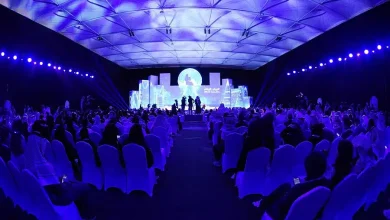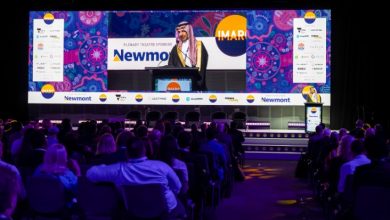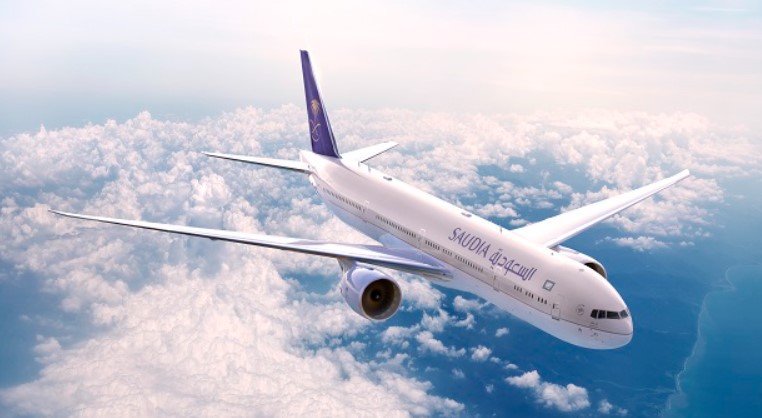
From a single Douglas DC-3 aircraft to a modern fleet of around 150 aircraft, Saudia, the national flag carrier of Saudi Arabia, has evolved into one of the world’s largest operators.
Formerly known as Saudi Arabian Airlines, Saudia has gone through an impressive journey that has transformed it into a global carrier, connecting the Kingdom to the world with a state-of-the-art fleet, an expanded network, and innovative services.
A Humble Beginning
The journey of Saudia started in 1945, when the US President, Franklin D. Roosevelt, gifted King Abdul Aziz bin Saud with a single twin-engine DC-3 (Dakota) HZ-AAX, following their historic meeting in the Suez Canal aboard the USS Quincy cruiser in February 14 of that year.
The aircraft went into operation, transporting passengers and cargo between Riyadh, Jeddah and Dhahran. Shortly after, the Saudi government purchased two additional DC-3 aircraft.
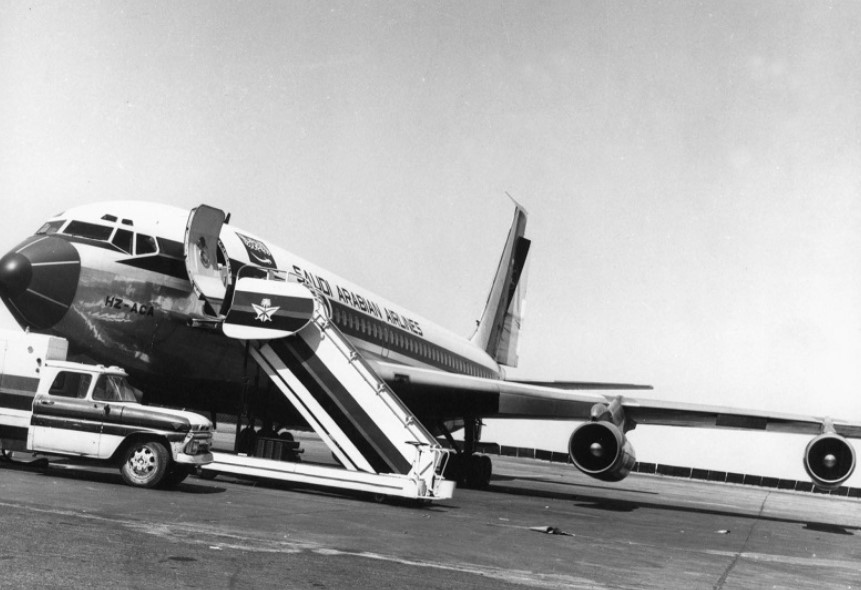
In 1946, the Saudi Ministry of Defense established Saudia as an operating agency, with its first airport and operating base located at Kandara, close to the downtown area of Jeddah – Saudia’s current headquarters. It operated Hajj pilgrim flights to Jeddah from Lydda, Palestine, and other countries.
The airline continued to expand, purchasing more aircraft, launching domestic routes, and adding new cities to its network. Today, Saudia’s fleet consists of approximately 150 aircraft, including the most advanced wide-body jets such as B787-9, B777-268L, B777-300ER, Airbus A320-200, Airbus A321, and Airbus A330-300. The airline has set an ambitious plan to grow its fleet to over 200 aircraft by 2030.
Key Milestones
Throughout its journey, Saudia has made major strides, establishing itself as one of the largest airlines in the Middle East. In 1962, it became the first airline in the Middle East to operate commercial jet airliners, by acquiring two Boeing 720s.
A year later, King Faisal signed a royal decree making Saudia a legally independent, commercial entity with its own board of directors.
In the late 1960s, Saudia cemented its position in the global aviation community by joining the Arab Air Carriers Organization (AACO) as a founding member in 1965, and the International Air Transport Association (IATA) in 1967.
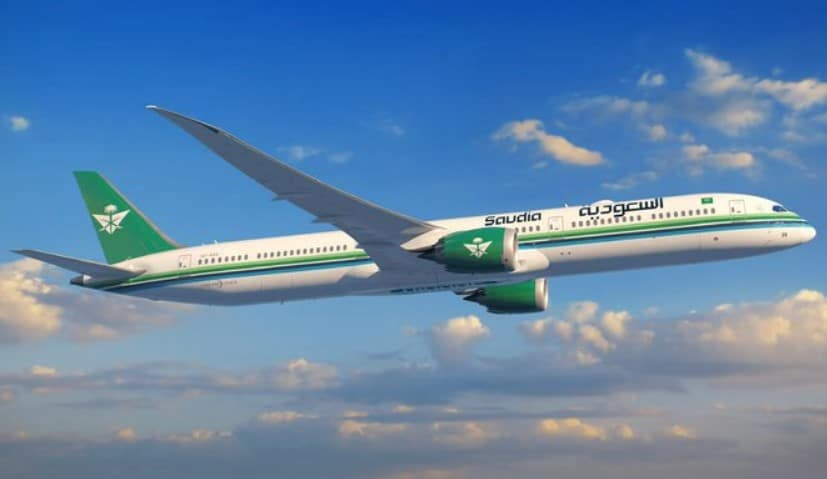
In 1972, the airline was rebranded to Saudia, adopting new livery and corporate identity. It achieved another major milestone in 1975 as its first Lockheed L-1011 TriStars went into service in celebration of the airline’s 30th anniversary. Then, it began its first non-stop service to New York, using long-range Boeing 747SP aircraft.
Saudia Going International
Saudia’s intercontinental expansion has continued unabated by adding new destinations, training national cadres and upgrading its services to meet the highest international standards.
In 2011, Saudia joined SkyTeam global alliance, becoming the first member from the Middle East. It signed agreements with the alliance’s member airlines.
Since 2012, the airline embarked on a massive modernization program, phasing out older aircraft and acquiring new, fuel-efficient models like the Boeing 787 Dreamliner and various Airbus A320 and A330 variants.
Transformation under Vision 2030
Throughout the 2020s, Saudia has embarked on an ambitious expansion plan to transform into a global mega-carrier, bringing the world to Saudi Arabia, in line with the objectives of Saudi Vision 2030.
In the light of this, Saudia developed a comprehensive, multi-faceted strategy to leverage its position as the national carrier to support the Kingdom’s economic diversification and become a major force in global aviation. The strategy focuses on doubling Saudia’s fleet, expanding its route network, and improving the passenger experience.
Under Saudia‘s international development plan, the airline added more than 10 new destinations at the start of 2025, further expanding its existing network of more than 100 destinations across four continents.
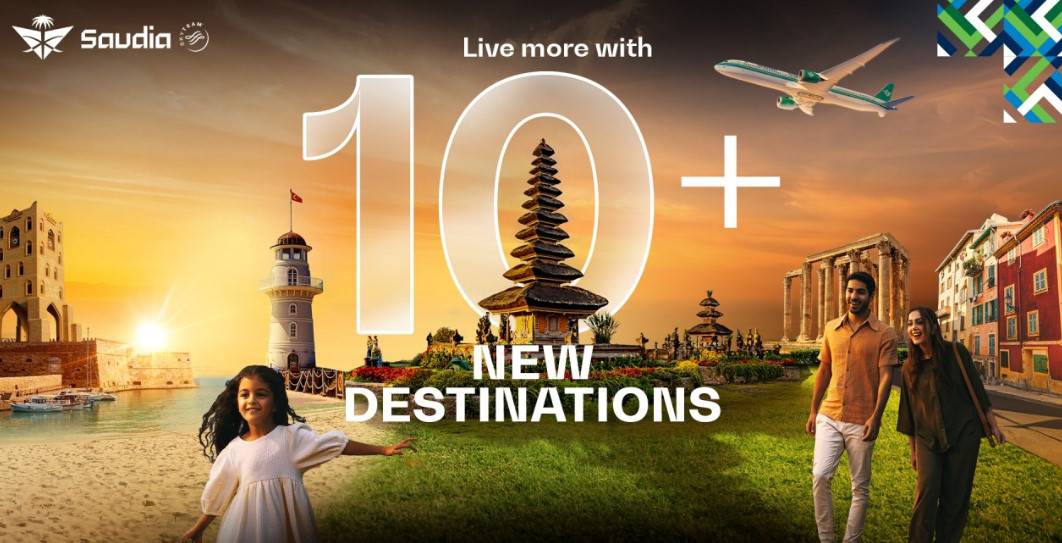
This network expansion is aided by Saudia’s modern fleet, consisting of safe and efficient 147 Boeing and Airbus aircraft, with daily operations exceeding 530 flights.
Moreover, it is supported by the company’s commitment to high standards of onboard service, including comfortable seating, advanced in-flight entertainment systems, and authentic Saudi hospitality.
Commitment to Innovation
Saudia has demonstrated a dedicated commitment to excellence and innovation, aiming to provides a world-class travel experience that reflects Saudi hospitality. To this end, it retrofits its current fleet with new cabins, modern amenities like high-speed Wi-Fi, and upgraded entertainment systems.
Onboard, Saudia serves Saudi coffee and dates on all flights, showcasing Saudi Arabia’s generosity and hospitality. Moreover, its SaudiaBEYOND in-flight entertainment system offers a vast library of content and unique features, including a flight map showing the Qibla (the direction of prayer).
In 2025, the airline introduced more innovative services to enhance the passenger experience, including the “Share Item Location” feature from Apple to streamline baggage recovery, allowing Saudia’s passengers to track their lost or delayed baggage.
For a luxurious travel experience, Saudia forged a partnership with the ELIE SAAB brand to provide First and Business Class passengers with custom-designed amenity kits with elegant and sophisticated designs that reflect the airline’s unique brand craftsmanship.

Hajj and Umrah pilgrims also enjoy unique services, such as in-flight reminders for prayer times and the “Hajj without Luggage” service, allowing for luggage to be collected directly from their residences after completing their rituals for a hassle-free departure.
Saudia Corporate Structure
Saudia, which is fully owned by Saudi Arabia’s government, has developed from a single state-owned airline into a diversified aviation group. Its parent company, Saudia Group, oversees the entire airline group.
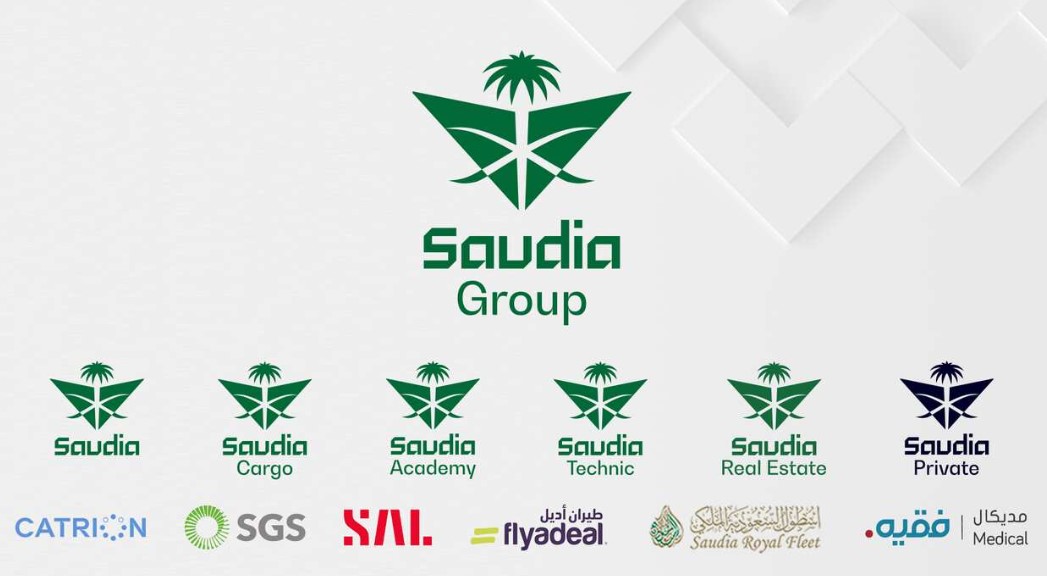
Saudia is the primary national carrier, while flyadeal is the low-cost carrier arm of the group. Saudia Cargo is responsible for air freight and logistics and Saudia Private Aviation is a VIP charter operator that provides private jet services.
Meanwhile, Saudia Technic is the maintenance, repair, and overhaul (MRO) division. Saudia Catering is the in-flight catering and food services provider for the airline and other clients.
Global Recognition
Saudia has consistently been recognized by prestigious industry organizations for its high-quality services and operational excellence.
The airline has won the Skytrax Awards for the “World’s Most Improved Airline” multiple times, in 2017, 2020, and 2024. It was also named “Best Airline Staff Service in the Middle East” at the 2025 Skytrax World Airline Awards.
In recognition of its dedication to enhancing the passenger experience, Saudia climbed to the 17th place in the Skytrax global rankings in 2025. Moreover, it was ranked first for the “Best Economy Class Airline Catering” in 2024.
Furthermore, the airline received the Apex Award for “World Class Airline” for four consecutive years (2022, 2023, 2024, and 2025). It has also been recognized several times for its strong on-time performance by Cirium.
Saudia has been recognized multiple times as the “Best Hajj and Umrah Carrier” by reputable organizations.


